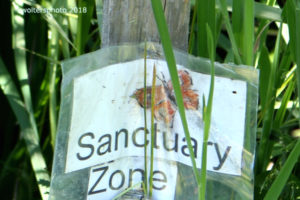Programa de transformación del pajarillo
Semena 11
 Pisar con suavidad
Pisar con suavidad
Este es realmente el mensaje central para esta próxima semana: pisa suavemente para no asustar al bebé.
Se podría decir: sé gentil contigo mismo, sé amable contigo mismo.
En movimiento –sé intencionado y medido, el mensaje real fue: despacio, reduce velocidad, despacio.
Estudia y observa.
El proceso se intensifica y, en lugar de tomarnos un descanso, estamos llamados a estar intensamente presentes, a prestar atención a lo que realmente está sucediendo en y con nuestra sensación corporal, emociones y pensamientos.
El proceso de esta semana es muy parecido al capítulo cuatro de la MBH (La máquina biológica humana, de E.J Gold). Reuniendo datos sobre el sueño de la máquina, solo que formulado así:
Observa tus programas automáticos ya sean de movimiento, emociones o pensamientos.
Los movimientos podrían ser gesticular con las manos, balancear las piernas, caminar de una forma determinada, poner los ojos en blanco.
Las emociones: deprimirse por algo que alguien dijo, sentirse indigno, sentirse poca cosa o superior, o no lo suficientemente bueno.
Pensamientos: tus grabaciones automáticas de lo que te dices sobre ti mismo, de otros o de las situaciones.
En la autoobservación, reduce la velocidad. Presta atención a lo que está sucediendo en tu cuerpo, momento a momento. Pregúntate si lo que está sucediendo es doloroso, te sientes bien, sientes que es correcto, neutral u horrible. ¿Cosquillea, es agudo, sin brillo, hueco, con presión, etc.?
Observa el efecto que tus reacciones y creencias automáticas tienen en tu vida y bienestar, tanto en situaciones específicas como, consecuentemente, en tu vida en general.
Estudio
Esta semana, la petición de estudio es ayudar a aclarar los desafíos neuroeléctricos que enfrenta un organismo biológico humano que vive con un trauma temprano y profundo. La mayoría del conocimiento más específico disponible para nosotros ha sido presentado en los últimos 25 años aproximadamente.
Al despertar a la máquina biológica humana, inevitablemente llegará el momento de enfrentar, soportar o sentir algunas sensaciones que serán desagradables y muy desafiantes. La educación sobre el sistema nervioso y la forma en que percibe, llamada neurocepción y que es la capacidad innata de nuestro sistema nervioso para percibir todo por sí mismo, puede ser de gran ayuda para comprender nuestras reacciones automáticas. Saberlo desde un punto de vista más científico también puede ayudarnos con nuestra paciencia, compasión y actitud imparcial hacia nosotros mismos y hacia los demás.
¡Ve despacio!
Aquí están algunos temas y términos que ayudarán a entender las reacciones biológicas y automáticas del humano relacionadas con los mecanismos de supervivencia debido a traumas muy tempranos.
¿Qué es el trastorno de estrés postraumático (TEPT)?
¿Hay una diferencia fundamental en cómo un adulto, básicamente sano, puede lidiar con un trauma repentino, por ejemplo, una violación, frente a alguien que está condicionado con TEPT?
¿Cuál es la teoría de Polyvagal, introducida por el Dr. Stephen Porges en 1994?
¿Qué es el sistema de compromiso social?
¿Qué es la reacción de lucha o huida, y la de congelación y cómo se manifiesta cada una de ellas en ti mismo o en otras personas?
¿Qué es la excitación, activación e hiperexcitación del sistema nervioso?
¿Cuál es la diferencia entre la autorregulación y otra regulación?
Infórmate sobre la teoría del apego.
¿Qué es el apego seguro, el apego evitativo temeroso o el apego desorganizado?
También puedes obtener información al respecto investigando el sistema que utiliza la analogía de alguien que es una isla, una ola o un ancla, al describir los estilos de apego como los usó Stan Tatkin.
Para aquellos de ustedes que hayan asistido a un curso presencial de capacitación para ser lectores, recordarán el ejercicio de contacto.
Basado en tu estudio de lo anterior, ¿cuál cree que será el desafío para un participante que ha experimentado un TEPT severo?
El conocimiento acerca de las respuestas de la neurocepción y el trauma del cuerpo conduce a una mayor capacidad para ser imparcial y compasivo durante la observación de uno mismo. Armado con el conocimiento adquirido, podrías ser capaz de permanecer con la sensación un poquito más y, al final, notar que esa autoobservación puede tener un efecto de despertar general en el cuerpo-mente. Ser capaces de permanecer amablemente con nosotros mismos tiene un efecto suavizador, un efecto acogedor para nuestros cuerpos y mentes, y esto a su vez ayuda a mover la energía.
¿TIENES que estudiar? No para ti si tu atención y presencia están bien desarrolladas.
Si trabajas con otras personas, como en el yoga o la terapia, es profesional y honrado saber acerca de ciertas cosas por el bien de las personas que acuden a ti para recibir ayuda o entrenamiento.

 Reenfocarse con gratitud
Reenfocarse con gratitud El tema es la alegría, más concretamente: ¿cómo sabes que estás experimentando alegría?
El tema es la alegría, más concretamente: ¿cómo sabes que estás experimentando alegría? The topic is Joy, more specifically: how do you know when you are experiencing joy?
The topic is Joy, more specifically: how do you know when you are experiencing joy? Pisar con suavidad
Pisar con suavidad Birdie Transformation Program
Birdie Transformation Program